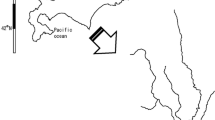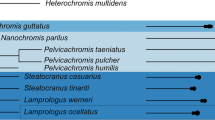Abstract
The relationship between sperm characteristics and reproductive success was examined in male herring, Clupea harengus L. Males were categorised as being first-time or repeat spawners on the basis of their age; they were also grouped according to whether their sperm were immediately active and exhibited forward motion on contact with seawater (FM) or had little or only vibratory motion (VM). Unlike the Pacific herring C. pallasii Valencienes, Atlantic herring sperm is usually motile on contact with seawater. The age, weight and gonadosomatic index (testes mass as a percentage of somatic mass = GSI) were measured and used as characteristics for individual fish. Sperm traits measured were (1) adenosine triphosphate (ATP) concentration, (2) sperm count, (3) duration of sperm motility. Reproductive success for each male was estimated from the fertilisation rate and from the length of larvae at hatching. Fertilisation rates for all fish were generally >80%. The ATP concentration of non-activated spermatozoa was negatively correlated with fertilisation rate. Among repeat spawners, fish with higher GSIs produced larvae that were larger at hatching. Although VM sperm fertilised eggs at rates equivalent to fertilisation by FM sperm, the larvae produced by VM sperm were significantly smaller at hatching. Larval length tended to increase in parallel with the duration of sperm motility, but the relationship was not significant in these tests. The results did not indicate any age or size pattern to spawning readiness in male herring. Sperm that are not yet ready to be shed are not fully motile on contact with seawater, but are still capable of fertilising eggs that hatch successfully. There is likely to be a progression of males which come into spawning readiness within a spawning shoal; therefore it is possible that paternal influences would result in a progressive decrease in larval size over the spawning period in winter-spawning Celtic Sea herring.
Similar content being viewed by others
Author information
Authors and Affiliations
Additional information
Received: 22 November 1997 / Accepted: 8 June 1998
Rights and permissions
About this article
Cite this article
Evans, J., Geffen, A. Male characteristics, sperm traits, and reproductive success in winter-spawning Celtic Sea Atlantic herring, Clupea harengus. Marine Biology 132, 179–186 (1998). https://doi.org/10.1007/s002270050384
Issue Date:
DOI: https://doi.org/10.1007/s002270050384




